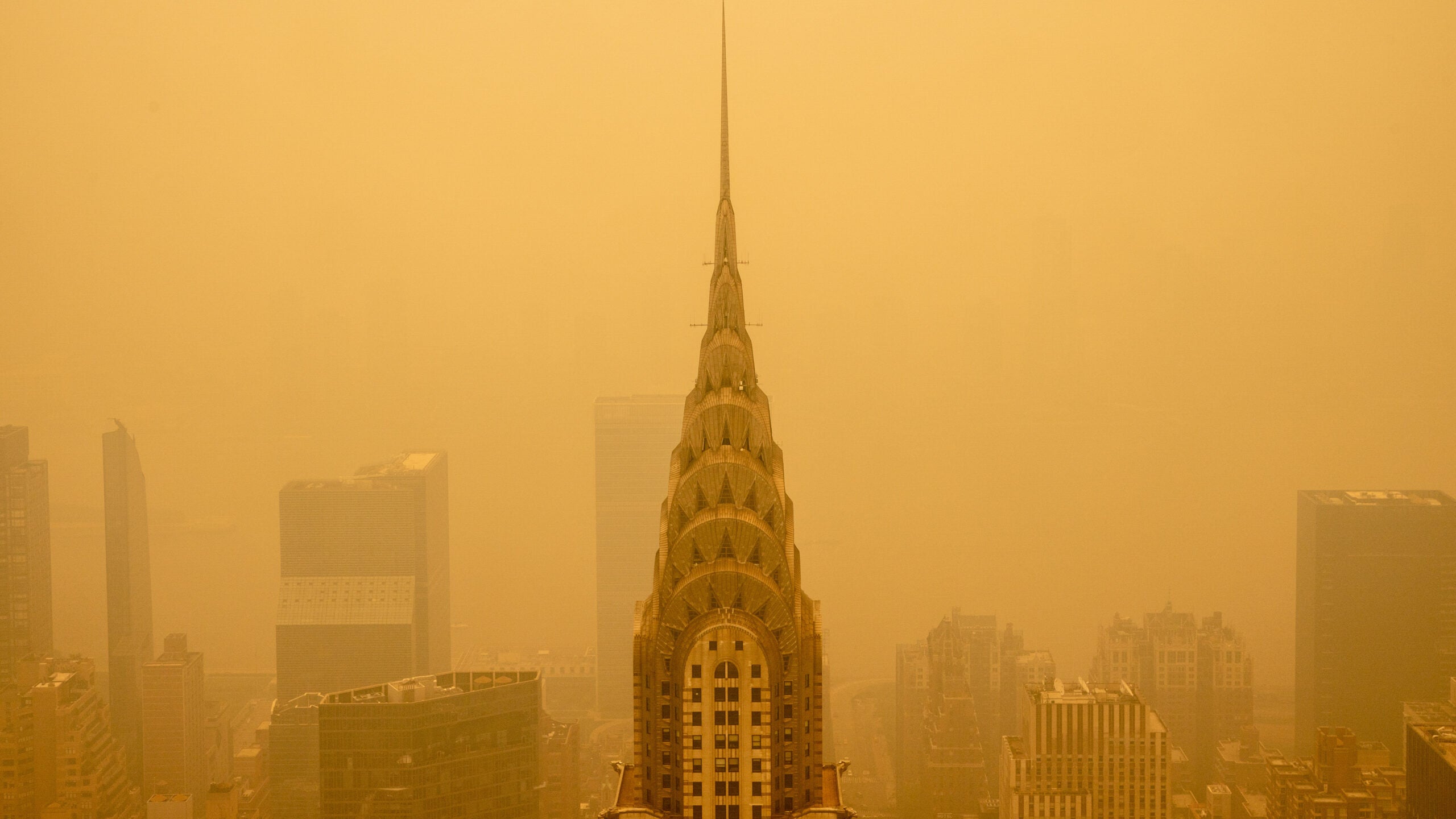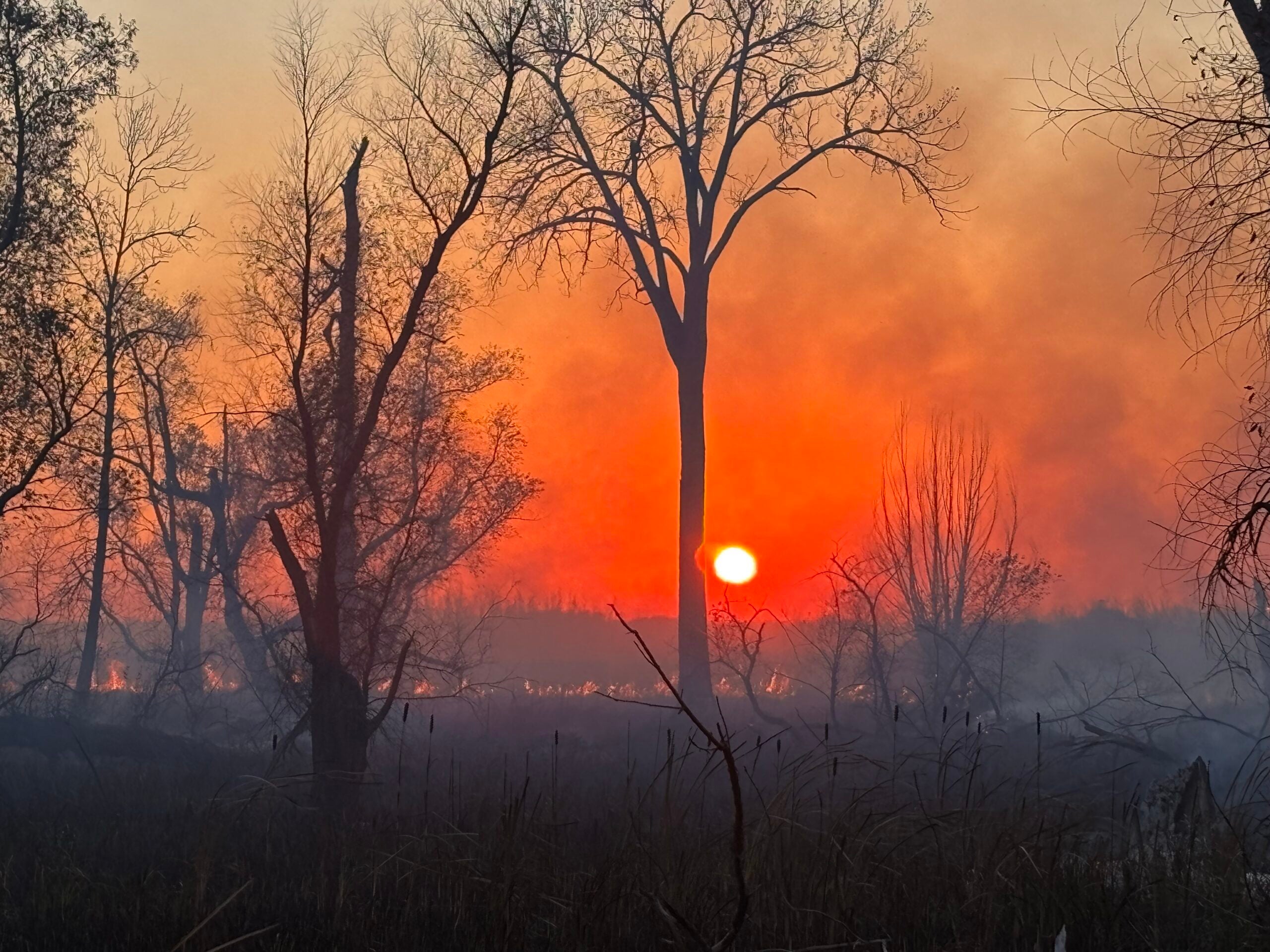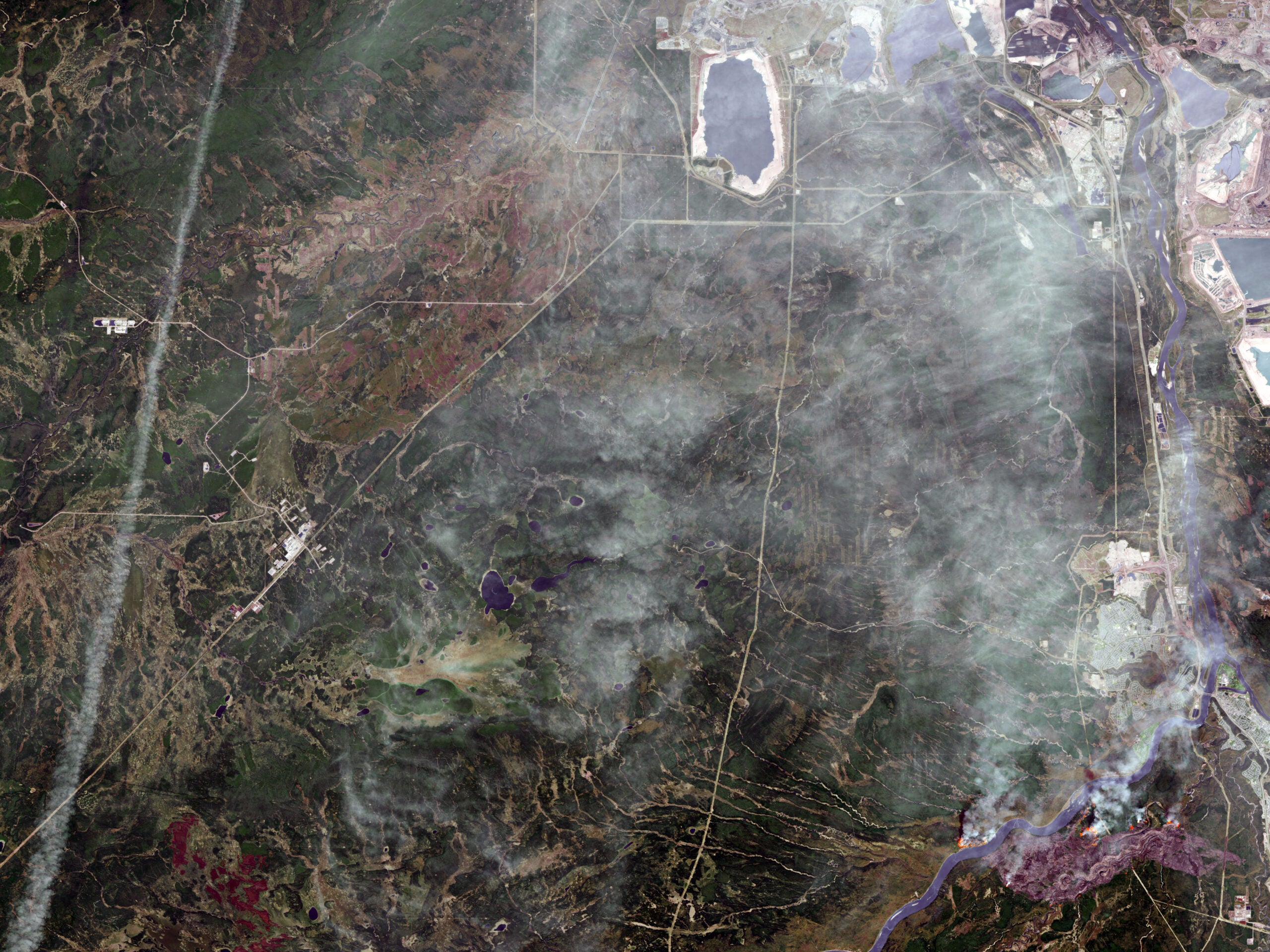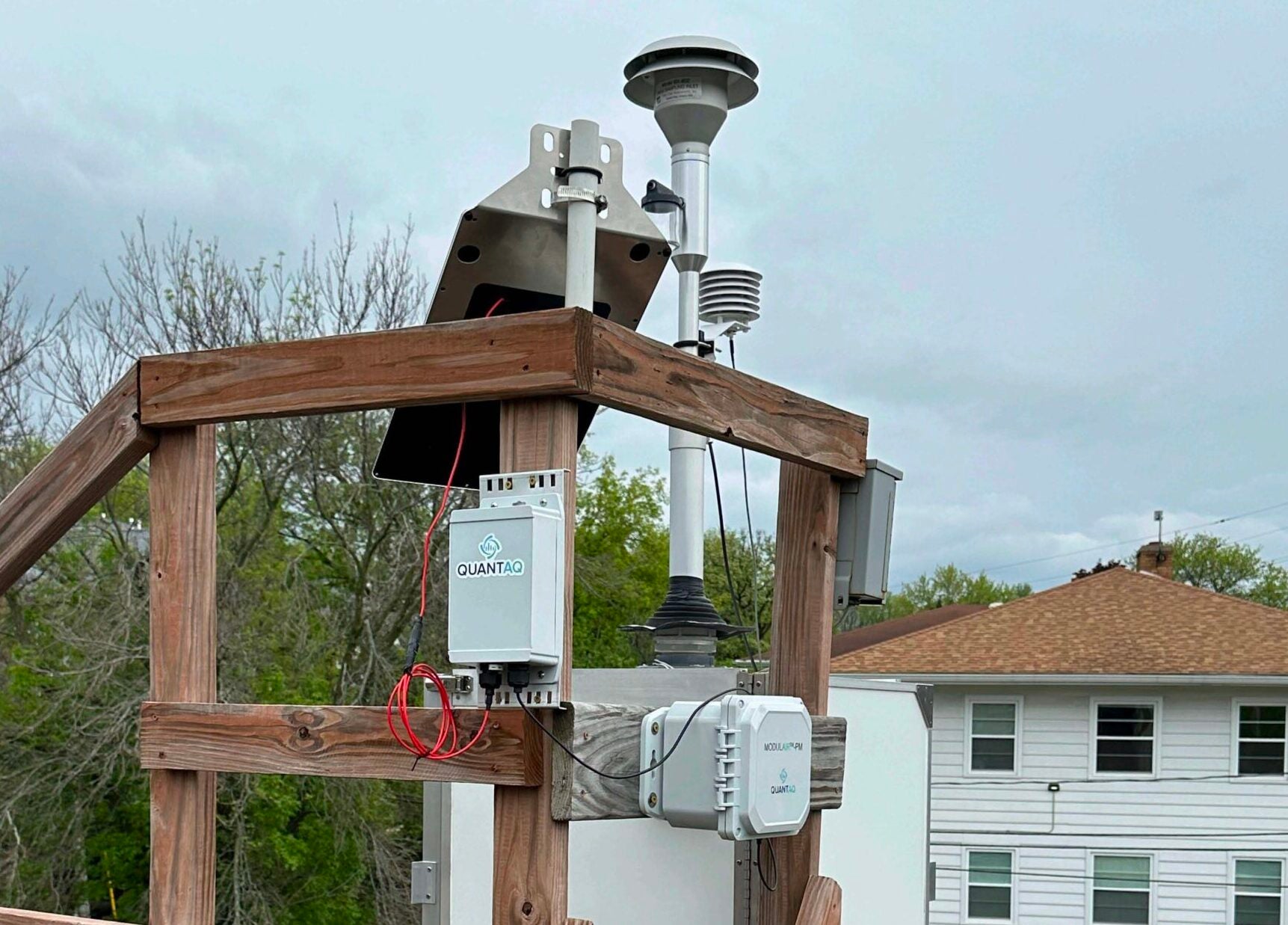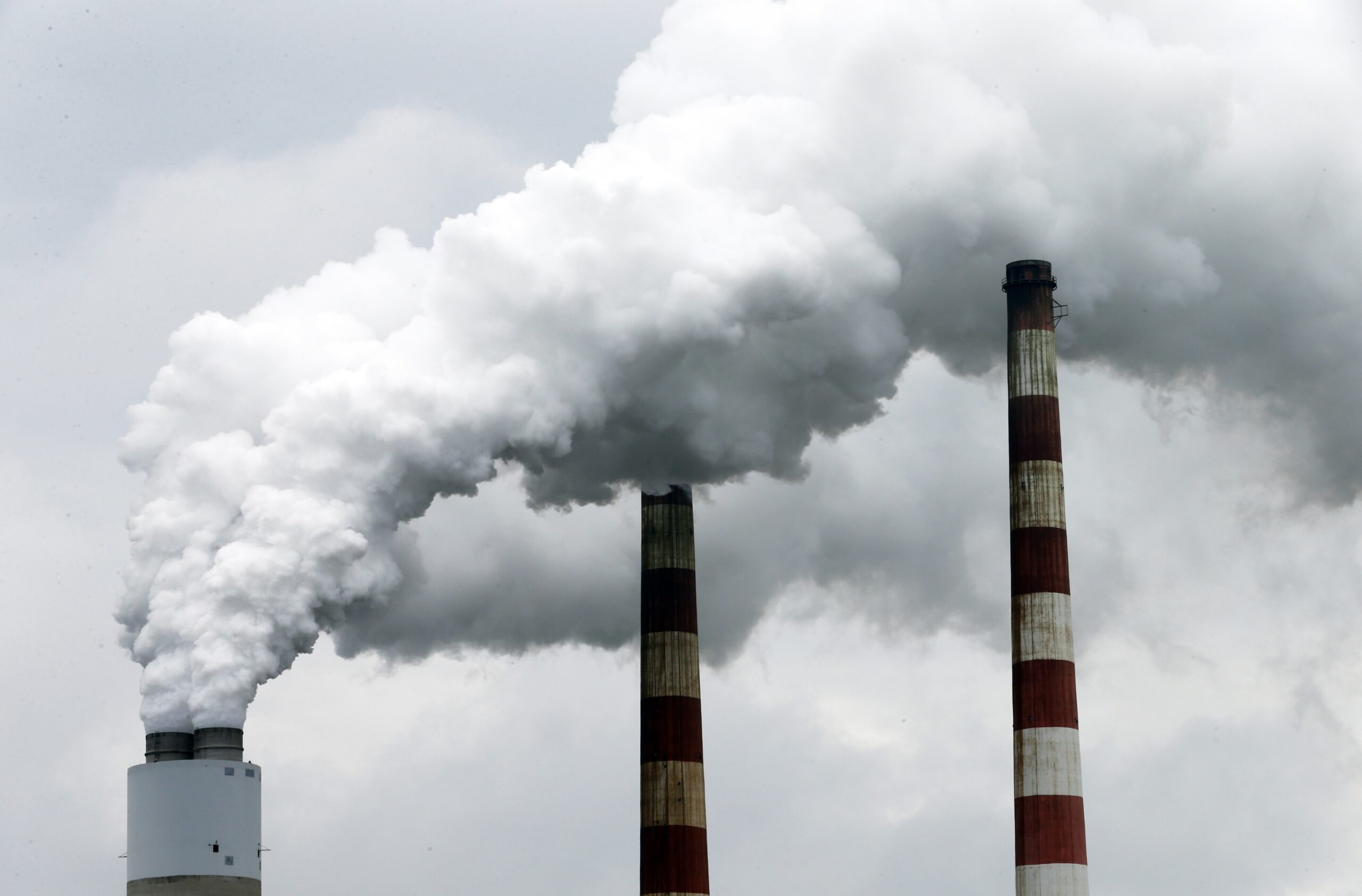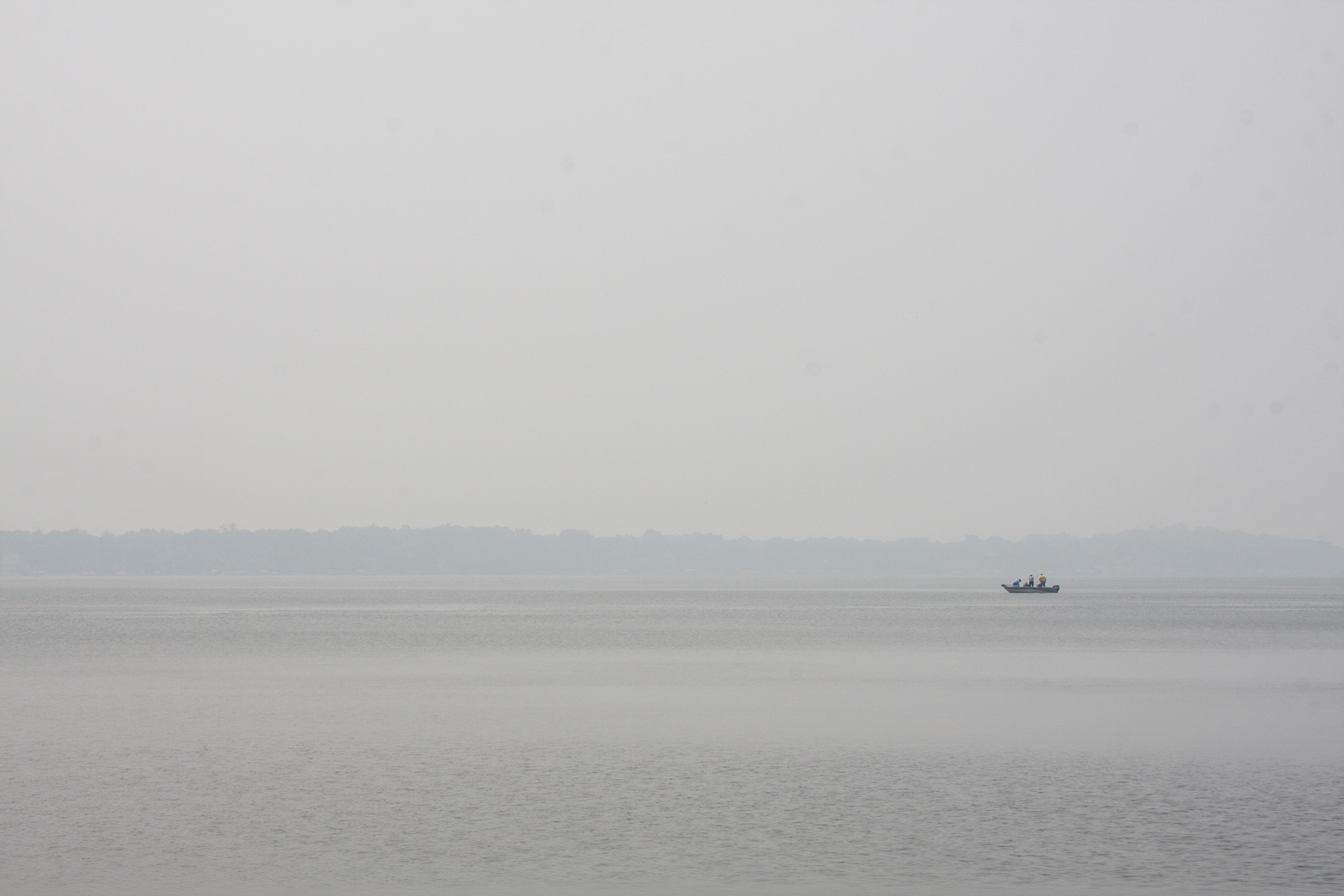This summer, millions of people across the eastern U.S. woke up one June morning to apocalyptic orange skies and thick, choking wildfire smoke.
Over the summer, massive Canadian wildfires blanketed central and eastern North America with smoke that lingered on and off for months, sending hundreds of people to the hospital. The unprecedented smoke, which showed up in parts of the country where it had never before been a problem, highlighted the growing and inescapable health risks from climate-related issues. And it showed how far many places have to go to help people protect themselves from the risks.
“The research coming out clearly shows that wildfire smoke is more toxic than air pollution from other sources,” says Kristi Ebi, a climate and health expert at the University of Washington. This year, she says, underscored the importance of understanding those risks, but also exposed gaps in current understanding. For instance, it’s still not clear how heavy exposure can affect health years down the line.
Stay informed on the latest news
Sign up for WPR’s email newsletter.
The year of orange skies
In March, wildfires started to burn across Canada, and within months burned through more than 45 million acres, the most ever recorded in the nation.
The fires were likely pushed to those new extremes by human-caused climate change. The hot, dry weather that settled in over the country, increasing the risk of wildfires, was twice as likely because of climate change, according to the World Weather Attribution group, researchers who quickly assess the relationship between climate change and extreme weather. In general, fossil fuel-driven climate change has made wildfires bigger, more intense, and by extension, smokier.
Smoke from the Canadian fires spread as far south as Florida and darkened skies in Iowa. In late June, the smoke’s dregs floated as far as Europe. Waves of smoke passed over North America for weeks, exposing millions to a dangerous mix of tiny soot particles, ash, and noxious gasses.
“We all out here [in the West] have been keenly aware of wildfires for some time now,” says Scott Fendorf, a geoscientist at Stanford University, who is based in California. But this year, he says, that awareness spread to people in the middle of the country and the East Coast. “They really understood what we’re facing now–and that they’re not spared from it either.”
How bad is smoke?
In early June, the air quality index in New York City hit 460 for the whole-day average. Air quality indexes measure air pollution: the higher the number, the worse the pollution. That number shocked doctors and medical experts. The previous daily record, from 2003, was 86 – what the EPA considers moderately unhealthy. But during the smoke event, New York’s air quality was nearly off the EPA’s chart, well into the realm it considers an “emergency.”
The smoke sent hundreds of people to emergency rooms in New York and beyond. Asthma-related visits across the state spiked by more than 80% on June 7, the worst day of smoke; in New York City, emergency departments took in 44% more respiratory patients than normal over the course of the smokiest week.
Tiny pollution particles in smoke can be ten times smaller than the width of a human hair, so small they can cross into people’s bloodstream once inhaled. Then, the body’s immune system reacts, driving an inflammatory response similar to that seen in cigarette smokers.
Smoke makes respiratory problems like asthma worse. But because the minute particles in the smoke penetrate beyond the lungs, they can also hurt other parts of the body. “The circulatory system can be affected. You can get headaches,” says Sam Heft-Neal, a scientist at Stanford University who studies wildfire smoke effects. Heart attacks and strokes are more common on smoky days. “And it’s not just people with preexisting conditions, although they’re particularly vulnerable, as well as children and pregnant women.”
“It’s really a health crisis,” says Kai Chen, a climate and health expert at Yale University, who led the New York emergency department study that found increased visits during the smoky week.
The long-term effects of smoke exposure, or how much worse heavy smoke is than mild conditions, are still open questions. But “we’re slowly moving towards the recognition that wildfires and wildfire smoke are more hazardous to us than we had recognized,” says Fendorf.
That toxicity is partly rooted in the changing composition of wildfire smoke. Wildfires no longer remain solely in wooded areas or grasslands, where they burn mostly vegetation. Now, as massive fires burn into human communities, they burn synthetic materials like housing insulation, plastics, or cars. Recent work from the EPA shows smoke containing those materials drove more inflammation, lung problems, and gene mutations in mice exposed to it.
Fendorf and his colleagues found traces of hexavalent chromium in wildfire ash in Northern California from fires in 2019 and 2020. The metal, known as the “Erin Brockovitch chemical,” is a known carcinogen; Brockovitch became famous in the 1990s for fighting a California utility for polluting her town’s groundwater with the cancer-causing metal. Chromium occurs naturally in some rocks and soil, but when heated to temperatures characteristic of intense wildfires, it converts to its toxic form. The researchers say it’s likely it was present in smoke plumes breathed in by people across California during those fires.
Fendorf, an author of that December study, was alarmed by his own findings. Before, he’d taken smoke risk lightly. He went running outside when it was smoky, and didn’t feel the need to put on a particle-filtering mask unless the smoke was heavy. “Now, having new knowledge of what’s in that particulate matter, my calculus is totally different,” he says. “I’m going to be wearing a N95 mask much, much, much earlier than I would have in the past.”
The health risks of smoke are particularly high for children. They breathe in more damaging smoke with every breath compared to adults. But the long-term impacts on their growth and development are still unknown.
Given the developing science and the increased risks of wildfires and smoke, Fendorf says it’s time to think seriously about how to protect people. In the short term, people can lower their personal risk by wearing particle-filtering N95 masks and filtering their indoor air. But longer term efforts to reduce the explosive, high-intensity wildfires–the ones that produce the most smoke– are also necessary, he says.
Controlled burns, Fendorf says, could help reduce the extra burnable material in forests, making explosive wildfires less likely. “If we’re really controlling severity, fire severity by doing control burns, that could end up being a huge bonus in terms of our health ramifications,” he says.
The other key strategy, he says, is stopping another intensifier of wildfires: human-caused climate change.
9(MDAyMjQ1NTA4MDEyMjU5MTk3OTdlZmMzMQ004))
© Copyright 2025 by NPR. To see more, visit https://www.npr.org.9(MDAyMjQ1NTA4MDEyMjU5MTk3OTdlZmMzMQ004))
